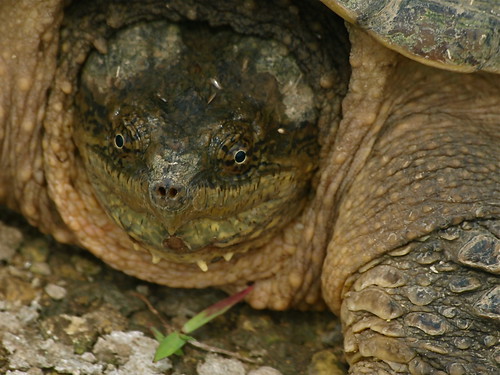
https://www.petwantsclt.com/petwants-charlotte-ingredients/ Snapper © 2008 Bo Mackison
This snapping turtle – one odd looking creature – was on dry land , traversing a muddy path moving south from the Wisconsin Riverway. She was not quite 2 feet long. It may look like I got rather close to her, but I’m not crazy – I was using a 70-300 mm telephoto lens. Even so I was about 3 feet away, and didn’t choose to get closer. She did sit quietly, staring at me wherever I went, and wasn’t disturbed as I set up my tripod to take a few photos.
Cheap Tramadol Cod Delivery Early to mid summer is a good time to see snapping turtles as it is their peak egg-laying time, and the turtles actively move from ponds and streams to nest-sites. They prefer sandy, south-facing banks and are frequently seen laying eggs along country roads. If seen in a road, they should be prodded towards the side which they are headed. Probably better not to pick one up as these turtles have strong jaws and long necks. And, after all, they are called “snapping” turtles.
https://www.petwantsclt.com/petwants-charlotte-ingredients/ Their feet are equipped with bear-like claws and their tails resemble the tails of dinosaurs. I think their faces look a bit like a mole’s face. Definitely a prehistoric-looking creature. They mostly live in the eastern two-thirds of the United States and Central America. Individuals can live at least 50 years.
Snapping turtles, as we know them, evolved about 40 million years ago, and they are the ancestors of most turtles of today. Today’s snapping turtles have hardly changed from 215 million years ago when the most primitive turtle we have evidence of lived. In comparison, the era of dinosaurs was approximately 150 million years ago and humans evolved a mere 3.5 million years ago.






